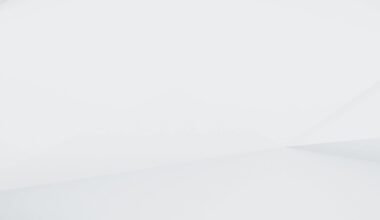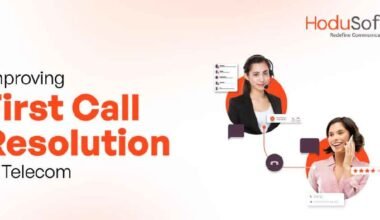October Birth Flower: Marigold and the Cosmos. The cosmos is a beautiful flower that comes in various colors such as pink, white, orange, and red. They are a popular choice for gardens and are often used in floral arrangements. In the language of flowers, the cosmos represent order, harmony, and serenity.
October Birth Flower – Marigold
Marigold is a flowering plant that belongs to the family Asteraceae. It is native to Mexico and Central America but is now widely cultivated all over the world for its ornamental and medicinal purposes. Marigolds are known for their bright, cheerful flowers that come in a range of colors, including orange, yellow, and red. In this article, we will delve into the history, cultivation, and uses of marigolds.
History of Marigold:
Marigold has been used for various purposes since ancient times. The Aztecs used flowers for medicinal purposes and also used them to decorate their homes and temples. They believed that the plant had magical properties and used it to ward off evil spirits. In Europe, the marigold was introduced in the 16th century and quickly became popular due to its bright colors and easy cultivation.
Cultivation of Marigold:
 Marigolds are easy to grow and care for, making them a popular choice for gardeners of all levels of experience. They prefer well-drained soil and full sun, although they can tolerate some shade. Marigold seeds can be sown directly into the ground or started indoors and then transplanted once the seedlings are established. They grow quickly and typically bloom in the summer and fall.
Marigolds are easy to grow and care for, making them a popular choice for gardeners of all levels of experience. They prefer well-drained soil and full sun, although they can tolerate some shade. Marigold seeds can be sown directly into the ground or started indoors and then transplanted once the seedlings are established. They grow quickly and typically bloom in the summer and fall.
There are two main types of marigold: French marigold (Tagetes patula) and African marigold (Tagetes erecta). French marigold is a smaller plants, growing up to 1 foot tall, while African marigolds can grow up to 3 feet tall. French marigolds are known for their compact growth and are often used in borders and containers. African marigolds have larger flowers and are often used in mass plantings or as cut flowers.
Related: November Birth Flower
Uses of Marigold:
Marigolds have a wide range of uses, including ornamental, medicinal, and culinary purposes.
- Ornamental uses: Marigolds are often used in gardens and landscapes to add bright colors and a cheerful look. They are also used in floral arrangements and as cut flowers.
- Medicinal uses: Marigolds have been used for medicinal purposes for centuries. They contain compounds that have anti-inflammatory, anti-bacterial, and anti-fungal properties. They are often used to treat skin conditions such as eczema, acne, and dermatitis. Marigold tea is also believed to help with digestive issues and menstrual cramps.
- Culinary uses: Marigold petals are sometimes used to add color and flavor to foods such as soups, stews, and salads. They have a slightly bitter taste and are often used in small amounts.
In addition to these uses, marigolds are also used in various cultural practices. In Mexico, marigolds are often used during the Day of the Dead celebrations, where they are used to decorate altars and graves. In Hindu culture, marigolds are used in garlands and offered to deities during worship.
In conclusion, the marigold is a versatile and popular plant with a long history of use in various cultures. Whether you are a gardener, a herbalist, or simply someone who appreciates the beauty of nature, the marigold is a plant that is worth exploring. With their bright colors and easy cultivation, marigold is sure to brighten up any garden or home.
 Cosmos Flowers: A Guide to Planting, Growing, and Care
Cosmos Flowers: A Guide to Planting, Growing, and Care
Cosmos flowers are beautiful and versatile plants that add color and texture to any garden or landscape. These annuals are native to Mexico and South America and are members of the Asteraceae family. Cosmos flowers are popular for their bright colors, long blooming periods, and low maintenance requirements. In this article, we will provide a comprehensive guide to planting, growing, and caring for cosmos flowers.
Planting Cosmos Flowers
Cosmos flowers can be planted from seeds or seedlings. If planting from seeds, it is best to start them indoors four to six weeks before the last frost date. Plant the seeds in trays filled with potting soil and water them regularly. When the seedlings have grown to about two inches tall, they can be transplanted into the garden.
If planting seedlings, choose healthy plants with strong stems and green leaves. Transplant them into well-draining soil that has been enriched with compost or other organic matter. Space the seedlings about 12 inches apart to allow them room to grow.
Growing Cosmos Flowers
Cosmos flowers thrive in full sun and well-draining soil. They can tolerate a wide range of soil types but prefer soil that is slightly acidic to neutral. Water the plants regularly, but avoid overwatering as this can lead to root rot. Cosmos flowers do not require fertilizer, but a light application of balanced fertilizer can help promote growth and flowering.
Cosmos flowers typically grow to be about three to six feet tall, depending on the variety. They have fern-like leaves and produce daisy-like flowers in shades of pink, white, red, orange, and yellow. The flowers can be single or double and can range in size from one to four inches in diameter.
Caring for Cosmos Flowers
Cosmos flowers are relatively low-maintenance plants, but there are a few things you can do to ensure they thrive. Deadhead the flowers regularly to encourage more blooming and prevent the plant from going to seed. This will also help the plant to produce a fuller, bushier shape.
If you live in an area with hot summers, it may be necessary to provide some shade for the plants during the hottest part of the day. Mulching around the base of the plants can also help to retain moisture in the soil.
Pests and Diseases
Cosmos flowers are generally not prone to pests or diseases. However, they can be susceptible to powdery mildew, which is a fungal disease that causes a white, powdery coating on the leaves. To prevent powdery mildew, avoid overcrowding the plants and ensure they have good air circulation.
Cosmos flowers can attract a variety of beneficial insects, including bees, butterflies, and hummingbirds. These insects can help to pollinate other plants in your garden and add to the overall health and biodiversity of your landscape.
In Conclusion
Cosmos flowers are a beautiful and low-maintenance addition to any garden or landscape. With their bright colors, long blooming periods, and tolerance for a wide range of growing conditions, they are a popular choice for both novice and experienced gardeners. By following these tips for planting, growing, and caring for cosmos flowers, you can enjoy their beauty and benefits in your own garden.







